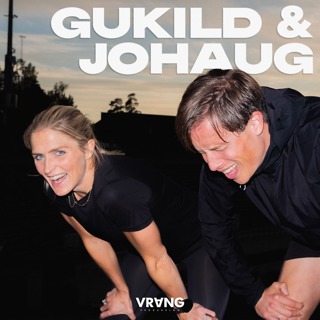
"Fashion 2025: Navigating Uncertainty and Reinventing the Industry"
The current state of the fashion industry is marked by significant challenges and uncertainties. According to the latest report from McKinsey, "The State of Fashion 2025," the industry is expected to face a particularly tumultuous and uncertain year. A long-feared cyclical slowdown has arrived, with consumers becoming increasingly price sensitive due to recent high inflation[1][3].Key statistics highlight the pessimistic outlook: only 20% of fashion executives expect improvements in consumer sentiment in 2025, while 39% see industry conditions worsening. Revenue growth is expected to stabilize in the low single digits, a continuation of the sluggishness seen in 2024. Notably, non-luxury segments are forecasted to drive the entirety of the increase in economic profit for the first time since 2010, excluding the COVID-19 pandemic[1][3].Regional differences are becoming starker, with Asia emerging as a critical market. China's economic deceleration and changing consumer preferences are making growth challenging, leading brands to focus on other Asian markets like India and Japan. Japan's luxury boom is expected to continue into 2025, fueled by strong international and domestic spend[1][3].The industry is also grappling with the rise of "dupes" and the acceleration of climate change, which are further complicating the landscape. Sustainability, once a key agenda item, has fallen off the radar for many executives, indicating a shift in priorities[1][3].In response to these challenges, fashion leaders are diversifying their sourcing footprints in Asia and laying the foundations for nearshoring. They are also leveraging AI-powered curation across content and search to reinvent brand and product discovery[1][3].Comparing current conditions to previous reporting, the industry's outlook has become increasingly pessimistic. In 2023, 84% of industry leaders expected market conditions to decline or stay the same, a stark contrast to the cautious optimism seen in 2022[2].To navigate these challenges, executives are focusing on building pricing muscle, honing profitability, and broadening scenario planning. They are also prioritizing cost improvements and increasing prices to protect their bottom lines[2].In conclusion, the fashion industry is facing a complex and uncertain 2025. With sluggish growth, shifting consumer behavior, and significant market disruptions, leaders must adapt and innovate to seize growth opportunities. By diversifying sourcing, leveraging technology, and focusing on profitability, the industry can navigate these challenges and emerge stronger.This content was created in partnership and with the help of Artificial Intelligence AI
5 Feb 2min

Fashion in Flux: Navigating Uncertainty and Adapting to Change in the Industry
The current state of the fashion industry is marked by significant challenges and uncertainties. According to the latest report from McKinsey, "The State of Fashion 2025," the industry is facing a particularly tumultuous and uncertain year. A long-feared cyclical slowdown has arrived, with consumers, affected by recent high inflation, becoming increasingly price sensitive[1][3].Key statistics highlight the pessimistic outlook: only 20% of fashion executives expect improvements in consumer sentiment in 2025, while 39% see industry conditions worsening. Revenue growth is expected to stabilize in the low single digits, a continuation of the sluggishness seen in 2024[1][3].Regional differences are becoming starker, with Asia emerging as a critical market. China's economic deceleration and changing consumer preferences are making growth challenging, leading international fashion brands to look to other Asian markets such as India and Japan. Japan's luxury boom is expected to continue into 2025, fueled by strong international and domestic spend[1][3].The industry is also grappling with the rise of dupes, the acceleration of climate change, and the continued reshuffling of global trade. Sustainability, which was once a top priority, has fallen off the agenda for many brands[3].In response to these challenges, fashion leaders are focusing on diversifying their sourcing footprint in Asia and laying the foundations for nearshoring. They are also investing in AI-powered curation across content and search to reinvent brand and product discovery[3].Comparing current conditions to previous reporting, the industry's outlook has become increasingly pessimistic. In 2023, 84% of fashion executives predicted market conditions would decline or stay the same, a stark contrast to the cautious optimism felt heading into 2022[2].The sportswear industry, however, is doing comparatively well, partly due to its integration into the fashion market and faster growth rate[5].In conclusion, the fashion industry is navigating a complex landscape of economic uncertainty, geographic disparities, and shifting consumer behavior. To seize growth, brands must navigate a maze of compounding challenges at every turn, focusing on strategic planning, pricing strategies, and supply chain management. The industry's resilience will be tested in 2025, with only those who adapt and innovate likely to thrive.This content was created in partnership and with the help of Artificial Intelligence AI
4 Feb 2min

Navigating Fashion's Challenges in 2025: Diversifying, Sustainability, and Tech-Enabled Experiences
The current state of the fashion industry is marked by significant challenges and uncertainties. According to the latest McKinsey report, "The State of Fashion 2025," the industry is expected to grow at a low single-digit rate in 2025, reflecting economic deceleration and muted consumer confidence[1][3]. This sluggish growth is a continuation of the trends seen in 2024, with non-luxury segments outperforming luxury for the first time since 2010, excluding the COVID-19 pandemic.Consumer behavior has shifted significantly, with 75% of consumers trading down their purchases for better value and pricing, a trend that rises to 86% among Gen Z and millennials[2]. These demographics increasingly crave sustainable retail and tech-enabled shopping experiences, blending digital and physical retail environments. However, reviews are mixed on whether consumers are willing to pay for sustainability.The industry faces economic headwinds, including the lingering effects of high inflation, which has led to cautious consumer spending. Inflation remains a primary worry for 32% of consumers across 29 countries, according to Ipsos's 2024 global consumer research[2]. Retailers have responded with price increases, but these have been driven by rising input costs rather than profit-taking, resulting in lower gross margins.Geographic disparities are also pronounced, with Europe benefiting from falling inflation and increased tourism, while the United States sees steady growth supported by high-net-worth individuals and a robust stock market[1][3]. Asia, particularly Japan, Korea, and India, are emerging as new growth engines, counteracting uncertainty around consumer spending in China, which is still recovering from the pandemic.To navigate these challenges, fashion industry stakeholders are advised to diversify sourcing beyond China, enhance sustainability through renewable energy and circular production models, leverage AI and technology for product discovery and supply chain optimization, and target overlooked demographics such as "Silver Spenders"[3].Compared to previous years, the industry's outlook is more pessimistic. In the BoF-McKinsey State of Fashion Executive Survey, only 20% of executives expect improvements in consumer sentiment in 2025, while 39% see industry conditions worsening[1][5]. This contrasts with the cautious optimism seen heading into 2022, when 91% of executives predicted market conditions would improve or remain the same[4].In summary, the fashion industry in 2025 is characterized by sluggish growth, shifting consumer behaviors, economic uncertainties, and geographic disparities. Industry leaders must adapt to these complex market conditions by diversifying sourcing, enhancing sustainability, leveraging technology, and targeting new demographics to drive growth and innovation.This content was created in partnership and with the help of Artificial Intelligence AI
3 Feb 3min

Fashion Forward 2025: Sustainability, AI, and the Future of the Industry
The fashion industry has entered 2025 with significant shifts and challenges. Over the past 48 hours, several key trends and developments have emerged that are shaping the sector's future.Firstly, the industry is grappling with changing consumer preferences and buying behaviors. According to recent reports, consumers are increasingly demanding sustainable and personalized products. This trend is reflected in the latest product launches, such as the collaboration between Erdem and Barbour, which combines femininity with outdoor practicality in their spring/summer 2025 capsule collection[5].Another significant development is the growing importance of technology in the fashion industry. AI and digitization are becoming crucial for brands to stay competitive. As highlighted by Carr, AI-driven customization is the next big wave for manufacturers, and those who do not adopt this technology risk being left behind[3].In terms of market movements, the luxury segment is expected to show resilience in 2025, with sales projected to grow between 5% and 10%[4]. However, the non-luxury segment is forecast to face challenges, particularly in Europe, where GDP growth is expected to be less than 1% and inflation remains high[4].Recent deals and partnerships also reflect the industry's focus on sustainability and innovation. For example, the collaboration between Kendrick Lamar and Willy Chavarria for a limited-edition Super Bowl halftime collection not only showcases the power of celebrity partnerships but also highlights the importance of social responsibility, with all proceeds going towards relief efforts for those impacted by the Los Angeles wildfires[5].Regulatory changes are also on the horizon, with stiffer competition, tougher ESG legislation, and evolving trade policies expected to impact the industry in 2025[3]. Fashion brands and retailers will need to build agility into their supply chains and invest in AI, digitization, and sustainability to stay ahead.In response to these challenges, industry leaders are emphasizing the need for resilience and adaptability. Matthew Katz, managing partner of SSA & Company, advises brands to "invest in your strengths, understand your consumers better than ever, and act with purpose"[1]. Similarly, Fashion for Good highlights the importance of collective action and leveraging technology to create a more sustainable and inclusive industry[2].Overall, the fashion industry is entering 2025 with a mix of challenges and opportunities. By embracing technology, sustainability, and innovation, brands can navigate the uncertain landscape and thrive in the years ahead.This content was created in partnership and with the help of Artificial Intelligence AI
31 Jan 2min

Fashion's 2025 Transformation: Navigating Economic Headwinds and Evolving Consumer Demands
The global fashion industry is poised for a transformative year in 2025, marked by a blend of opportunities and challenges. According to McKinsey & Company's "State of Fashion 2025" report, the industry faces economic headwinds, shifting consumer behaviors, and the need to embrace sustainability while navigating complex global trade dynamics.Economic growth in the fashion industry is expected to be sluggish, with revenue growth stabilizing in the low single digits. This reflects economic deceleration and muted consumer confidence. Non-luxury segments are expected to outperform luxury, marking a significant shift in profit drivers. Europe is set to benefit from increased tourism and lower inflation, while the U.S. market relies on resilient spending by high-net-worth individuals. Asia remains a focus, but China's slowing growth is prompting brands to look toward India, Japan, and Korea for expansion opportunities.Consumer behavior is undergoing a dramatic transformation, with value-consciousness and demographic shifts taking center stage. Amid economic uncertainty, shoppers are prioritizing affordability and practicality, driving growth in segments like resale, off-price, and "dupes." Over 75% of consumers are trading down their purchases for better value and pricing, with this number rising to 86% among Gen Z and millennials.Sustainability is also a key concern, with 70% of consumers considering it when making fashion purchases. The global sustainable-fashion market was valued at $7.8 billion in 2023 and is estimated to hit $33.05 billion by 2030.Fashion brands must navigate these complex market conditions while adapting to evolving consumer preferences. Strategic recommendations for 2025 include diversifying sourcing beyond China, enhancing sustainability through renewable energy and circular production models, leveraging AI and technology for product discovery and supply chain optimization, targeting overlooked demographics like the "Silver Spenders," and offering value-driven products while maintaining quality.In response to current challenges, fashion industry leaders are reconfiguring supply chains to prioritize nearshoring and manufacturing in geopolitically-aligned countries. They are also making efforts to reduce excess inventory and minimize the risk of shortfalls. Advances in inventory management are being driven by margin pressures and pressures from governments to reduce emissions and fashion waste.The climate crisis remains a potent force across fashion supply chains and in driving consumer behavior. Fashion executives are largely pessimistic about the year ahead, with only 20% expecting improvements in consumer sentiment in 2025, while 39% see industry conditions worsening.In comparison to previous reporting, the industry's outlook for 2025 appears to be a continuation of the sluggishness seen in 2024. However, there are pockets of growth to be found, particularly in non-luxury segments and in regions like Europe and Asia. Fashion brands must be agile and adaptable to seize these opportunities and navigate the complex challenges at every turn.This content was created in partnership and with the help of Artificial Intelligence AI
30 Jan 3min

Fashion 2025: Navigating Uncertainty, Driving Innovation
The fashion industry is entering 2025 with a mix of challenges and opportunities. According to the latest McKinsey report, the industry faces economic uncertainty, geographic disparities, and shifting consumer behavior, leading to a particularly tumultuous and uncertain year[1][4].Revenue growth is expected to stabilize in the low single digits, a continuation of the sluggishness seen in 2024. Luxury, which has led in value creation in recent years, will see non-luxury driving the entirety of the increase in economic profit for the first time since 2010, excluding the COVID-19 pandemic[1][4].Consumer behavior has shifted significantly, with consumers becoming increasingly price-sensitive due to recent high inflation. The rise of "dupes" and the acceleration of climate change are also impacting the industry. Regional differences, which became apparent in 2024, will become even starker in 2025[1][4].Despite these challenges, there are pockets of growth to be found. The industry will benefit from falling inflation and increased tourism in Europe, the resilience of high-net-worth individuals in the United States, and new growth engines in Asia, particularly in Japan, Korea, and India[1].Fashion leaders are responding to these challenges by focusing on sustainability, innovation, and strategic partnerships. For example, Louis Vuitton is collaborating with Takashi Murakami for a re-edition collection, while Cecilie Bahnsen is partnering with The North Face to merge haute couture with practical wear[2].Other notable partnerships include J.Crew's collaboration with Araks, SKIMS' Valentine's Day collection with K-pop star ROSÉ, and Balenciaga's partnership with Under Armour to merge high fashion with performance know-how[2].In terms of market initiatives, ANDMORE is launching new programs and experiences in 2025, focusing on education, enhanced buyer resources, and fostering stronger community connections[5].Comparing current conditions to previous reporting, the industry's outlook has become increasingly pessimistic. In the BoF-McKinsey State of Fashion Executive Survey, only 20% of executives expect improvements in consumer sentiment in 2025, while 39% see industry conditions worsening[1][4].In conclusion, the fashion industry is navigating a complex landscape in 2025, with economic uncertainty, geographic disparities, and shifting consumer behavior presenting significant challenges. However, by focusing on sustainability, innovation, and strategic partnerships, industry leaders can find pockets of growth and adapt to the changing market conditions.This content was created in partnership and with the help of Artificial Intelligence AI
29 Jan 3min

Fashion in 2025: Navigating Economic Deceleration, Changing Consumers, and Sustainability Imperatives
The global fashion industry is entering 2025 with a mix of challenges and opportunities. According to the latest McKinsey & Company's State of Fashion 2025 report, the industry is expected to grow at a low single-digit rate, reflecting economic deceleration and muted consumer confidence[1][3].Key drivers of this sluggish growth include regional disparities, with Europe benefiting from increased tourism and lower inflation, while the U.S. market relies on resilient spending by high-net-worth individuals. Asia, particularly China, faces economic uncertainties, prompting brands to look towards India, Japan, and Korea for expansion opportunities[1][3].Consumer behavior is undergoing a significant transformation, with value-consciousness and demographic shifts taking center stage. Shoppers are prioritizing affordability and practicality, driving growth in segments like resale, off-price, and "dupes." Sustainability continues to be a defining challenge, with regulatory pressures mounting and the climate crisis intensifying. Brands must innovate to reduce waste, lower emissions, and embrace circularity[1][3].Inventory management is another critical issue, with the industry producing 2.5 to 5 billion excess items in 2023, valued at $70 to $140 billion. This highlights the urgent need for improved demand forecasting and inventory management[1].Technology, particularly AI and digital innovation, is crucial for navigating these challenges. Brands are leveraging AI for product discovery, demand forecasting, and supply chain optimization to improve efficiency and customer experience[1][3].Fashion industry leaders are responding to these challenges by diversifying sourcing, enhancing sustainability, and targeting overlooked demographics. For example, brands are expanding sourcing beyond China to include nearshoring and emerging markets like Vietnam and India. Investments in renewable energy and collaborative initiatives are also underway to meet emission reduction targets[1][3].Compared to previous reporting, the industry's outlook has become increasingly pessimistic. In the BoF-McKinsey State of Fashion 2023 Survey, 84% of industry leaders expected market conditions to decline or stay the same in 2023, while in 2025, only 20% expect improvements in consumer sentiment[2][3].In conclusion, the fashion industry in 2025 is characterized by economic uncertainty, shifting consumer behaviors, and sustainability challenges. Success will require agility, innovation, and a deep understanding of regional and consumer dynamics. By embracing these priorities, industry players can position themselves for growth and resilience in the face of ongoing disruption.This content was created in partnership and with the help of Artificial Intelligence AI
28 Jan 3min

Navigating the Fashion Industry's Transformative Year Amidst Economic Headwinds and Shifting Consumer Trends in 2025
The global fashion industry is poised for a transformative year in 2025, marked by a blend of opportunities and challenges. According to the McKinsey & Company’s State of Fashion 2025 report, the industry faces economic headwinds, shifting consumer behaviors, and the need to embrace sustainability while navigating complex global trade dynamics.Economic growth in the fashion industry is expected to be sluggish in 2025, with revenue growth stabilizing in the low single digits. This reflects economic deceleration and muted consumer confidence. Non-luxury segments are expected to outperform luxury, marking a significant shift in profit drivers. While falling inflation and recovering tourism are bright spots in regions like Europe, economic uncertainties persist in markets like China and the United States[1][3].Consumer behavior is also undergoing significant shifts. Consumers, affected by the recent period of high inflation, are increasingly price sensitive. This has led to the rise of "dupes," or affordable alternatives to luxury items. Additionally, the acceleration of climate change and the continued reshuffling of global trade are creating new challenges for fashion brands[3][5].In response to these challenges, fashion industry leaders are focusing on several key strategies. These include diversifying sourcing beyond China to include nearshoring and emerging markets like Vietnam and India, enhancing sustainability through investments in renewable energy and circular production models, leveraging AI and technology for product discovery and supply chain optimization, and targeting overlooked demographics such as the "Silver Spenders"[1][3].Regional differences are becoming more pronounced, with Europe benefiting from falling inflation and increased tourism, while the United States is supported by high-net-worth individuals and a robust stock market. Asia, particularly India and Japan, are emerging as new growth engines, with international fashion brands looking to these markets to counteract uncertainty in China[3][5].The industry's outlook for 2025 is generally pessimistic, with 80% of executives expecting no improvement in the global fashion industry. Only 20% expect improvements in consumer sentiment, while 39% see industry conditions worsening[3][5].In comparison to previous years, the fashion industry's growth in 2025 is expected to be slower than in 2022, when the industry rebounded strongly from the COVID-19 pandemic. The luxury segment is expected to show more resilience, with sales projected to grow 5% to 10% in 2023, compared to flat or negative growth for the rest of the industry[2].Overall, the fashion industry in 2025 is characterized by economic uncertainty, geographic disparities, and shifting consumer behavior. While there are still opportunities for growth, navigating these challenges will require careful strategic planning and adaptability.This content was created in partnership and with the help of Artificial Intelligence AI
27 Jan 3min





















